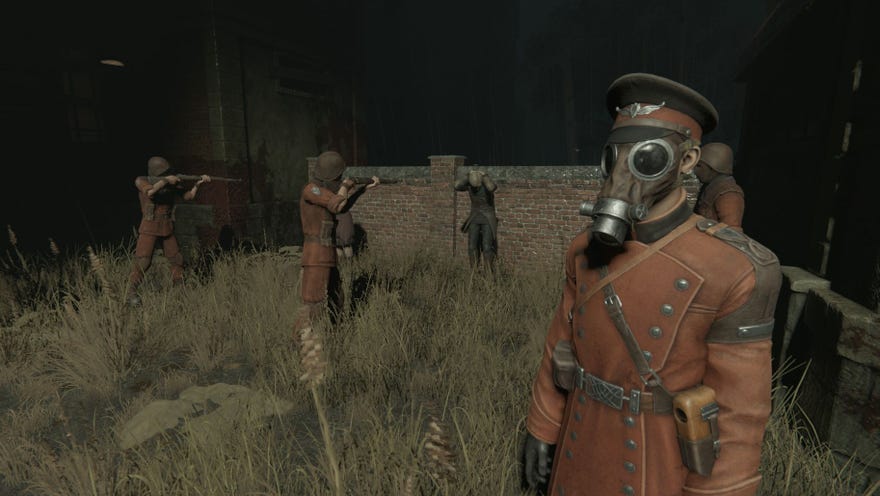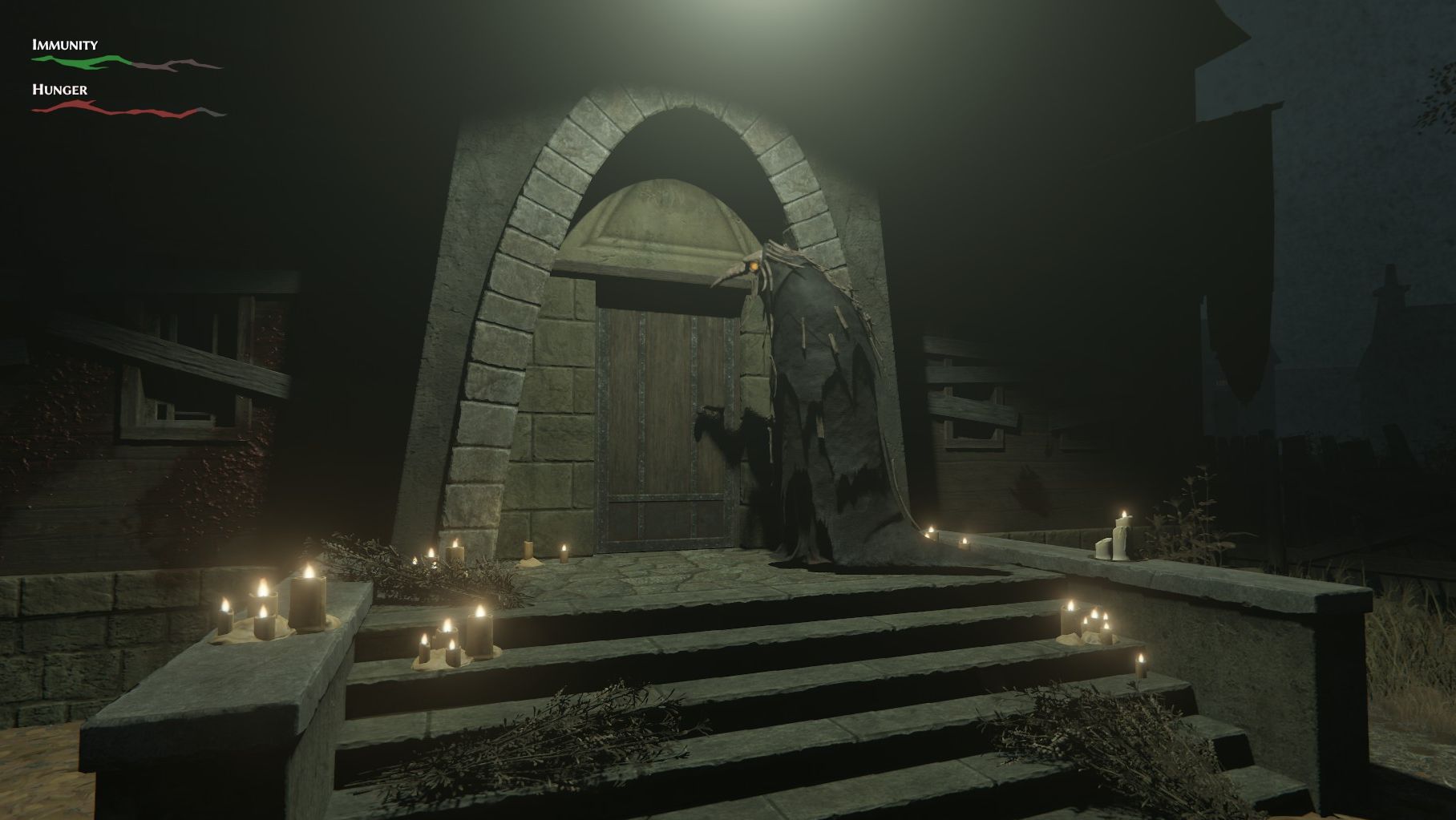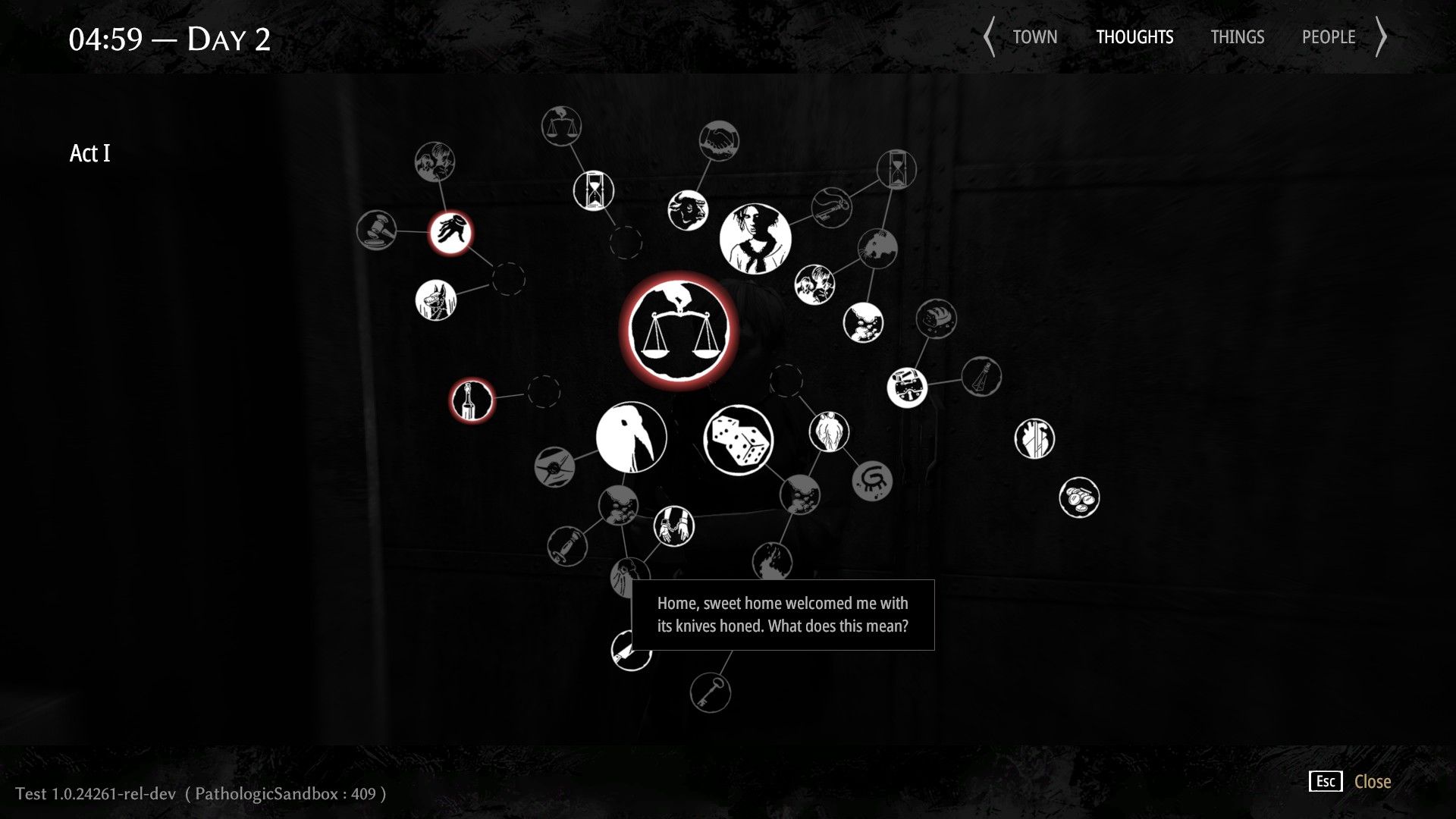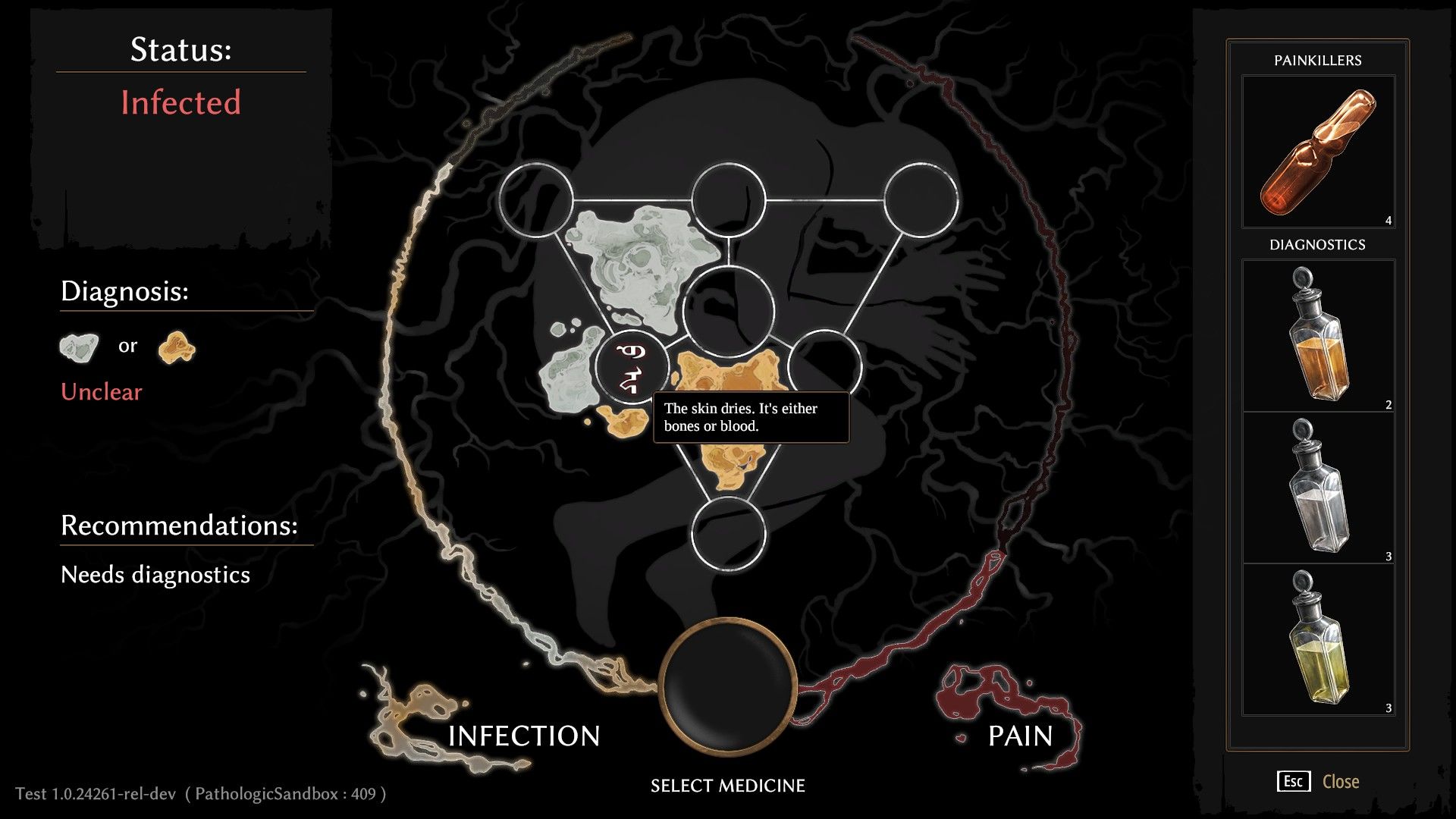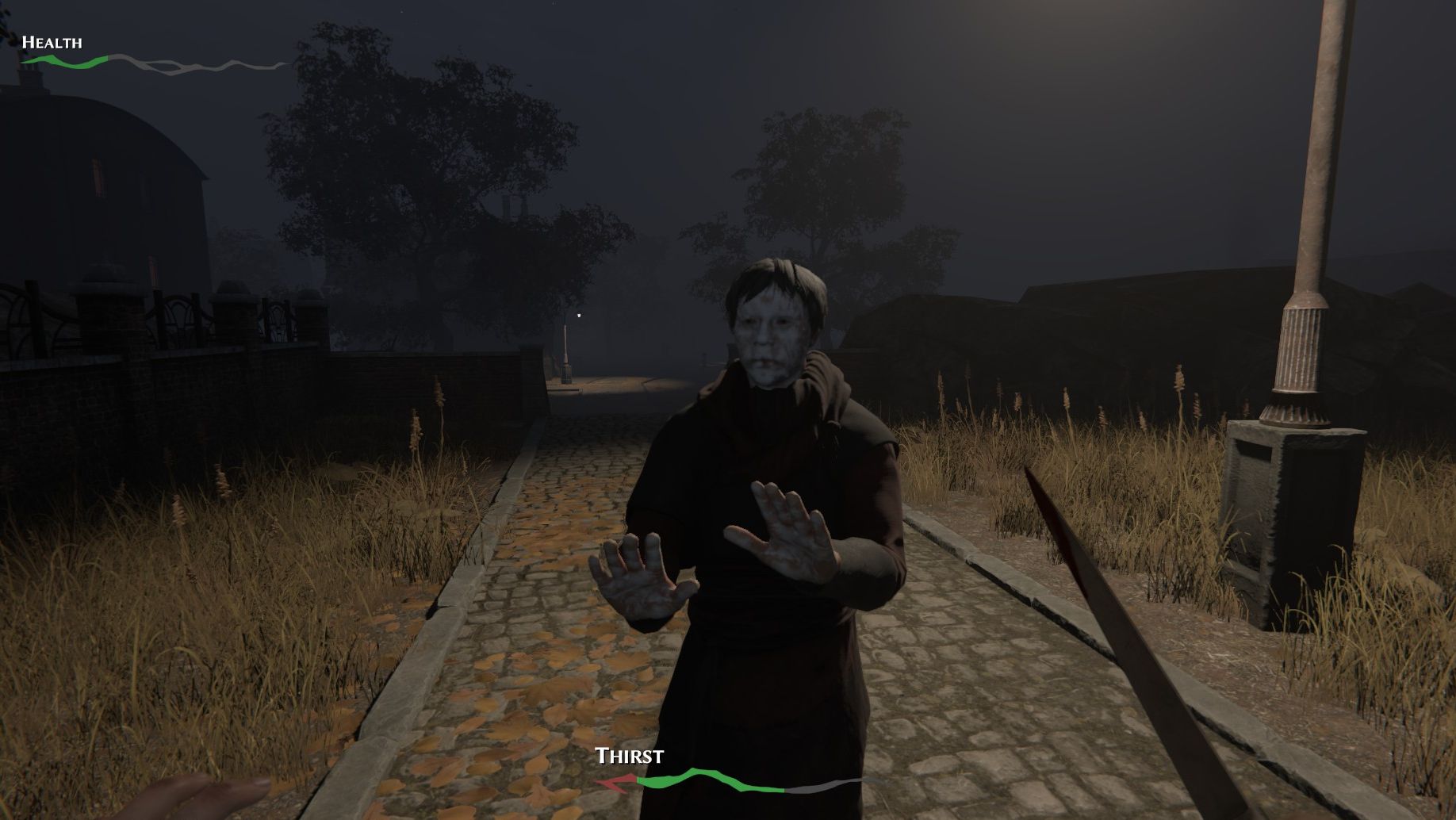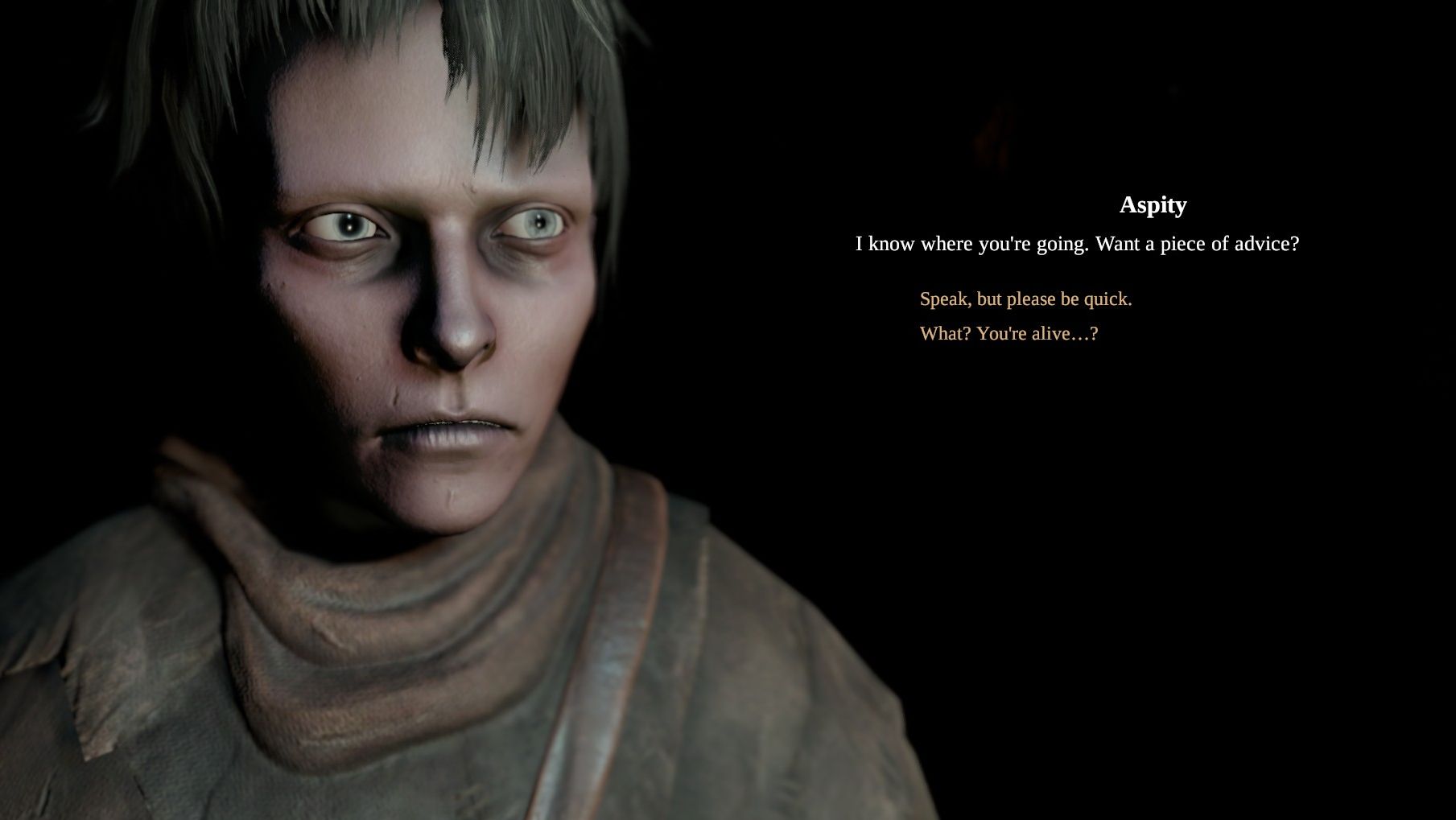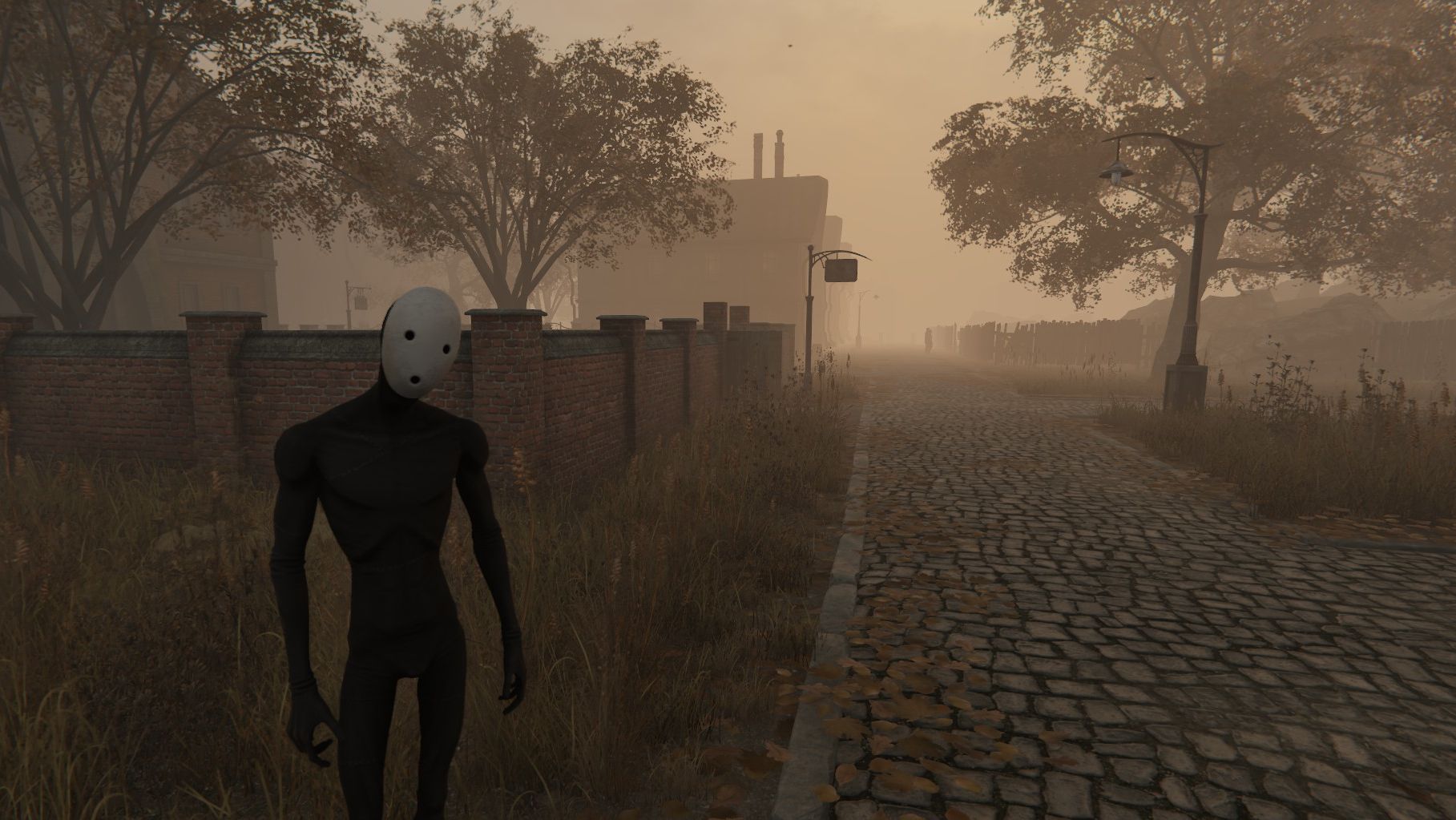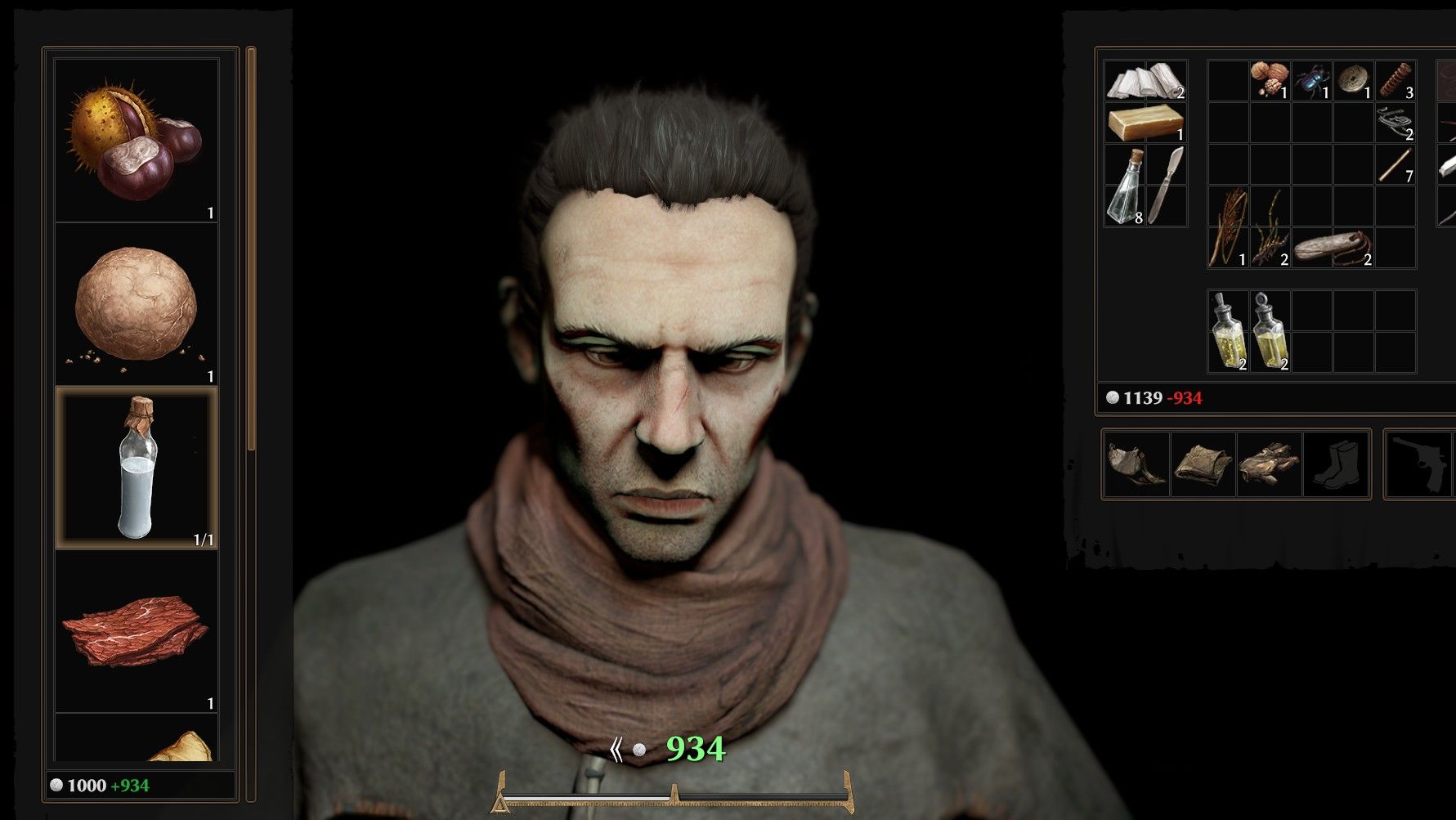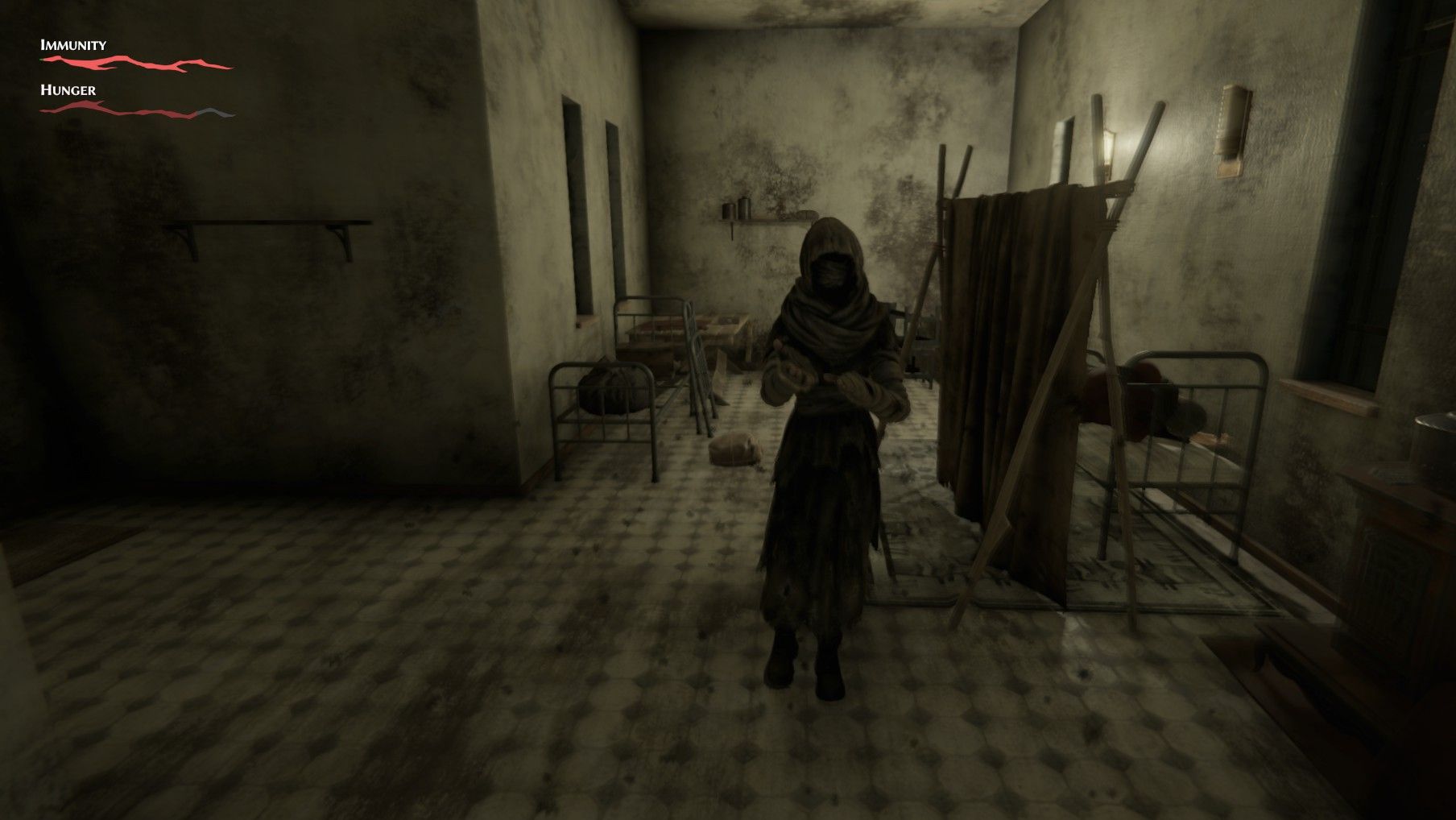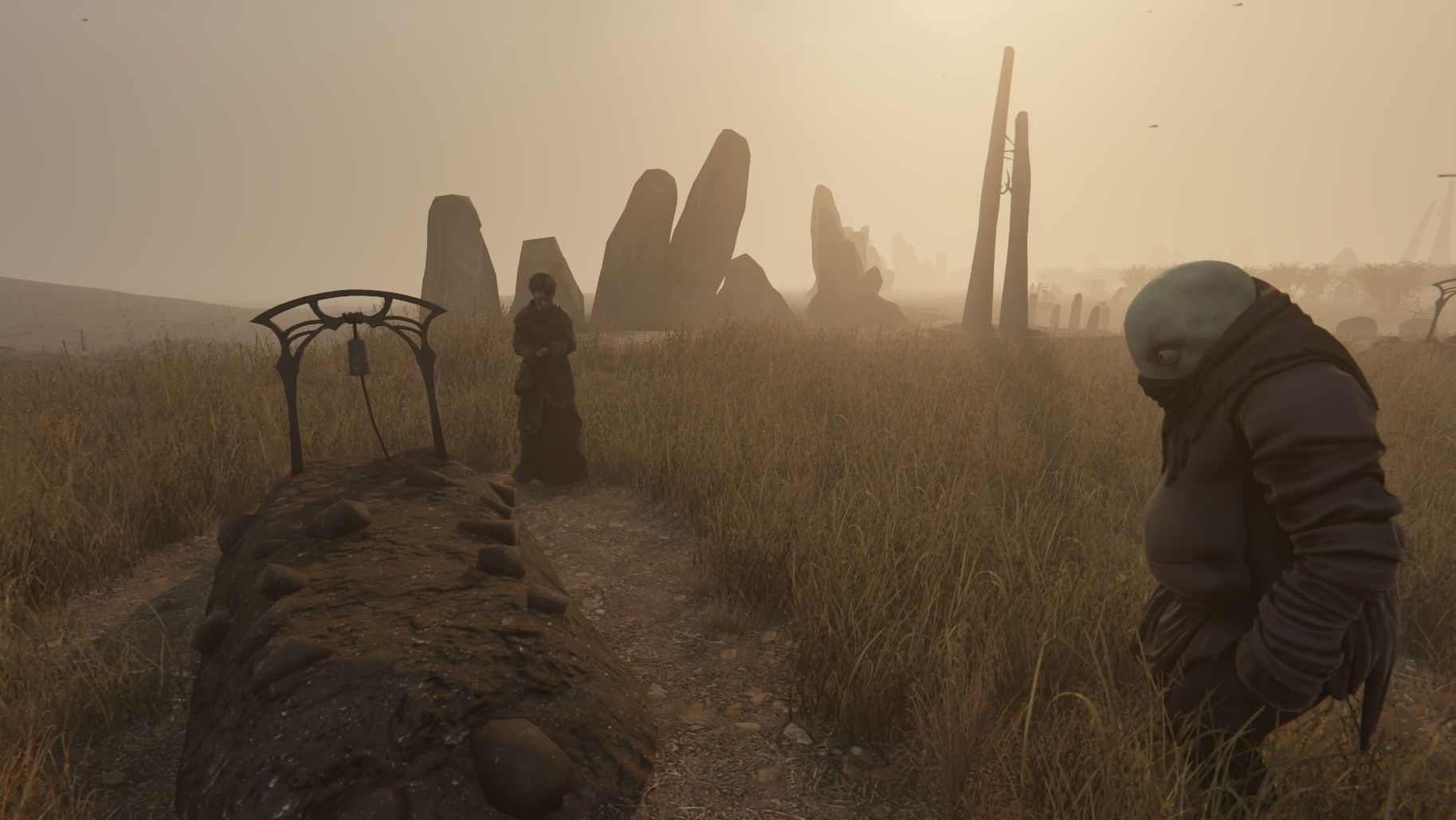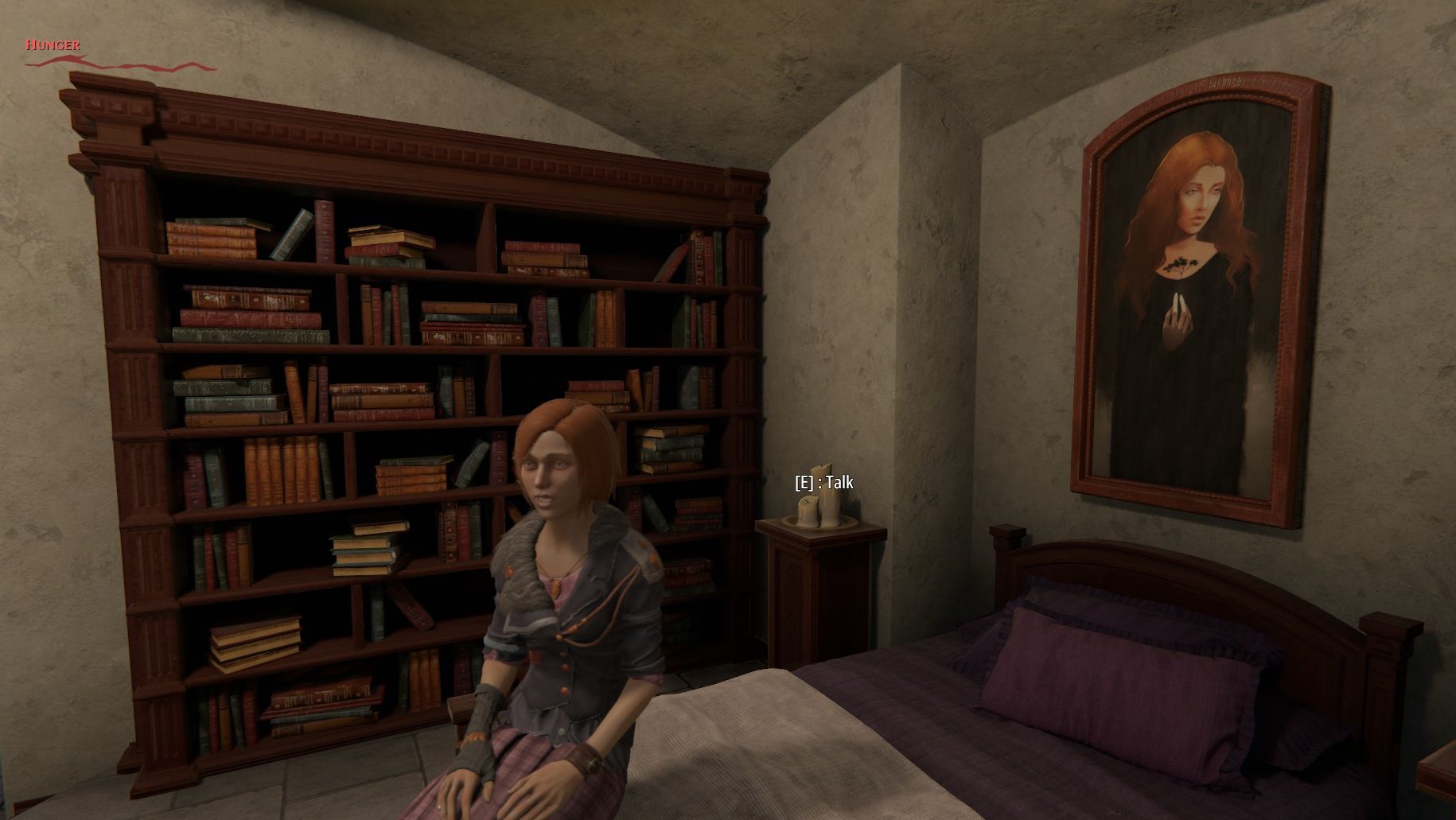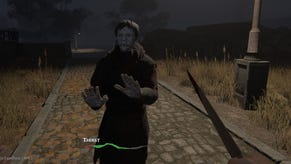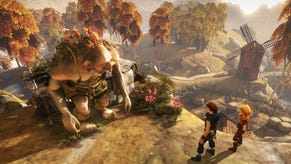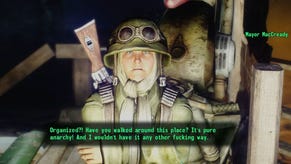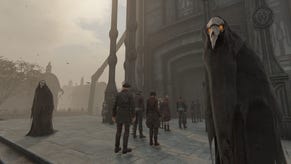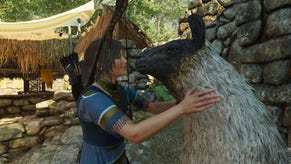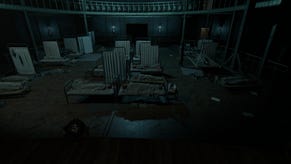Wot I Think: Pathologic 2
Plagued with difficulty
Pathologic 2 is cursed. And me too, because I’m saddled with reviewing the follow-up to a cult favourite. Pathologic was a first-person plague doctor simulator that was badly broken and refreshingly unusual. Depending on your sensibilities, you’ll be glad to learn that this reboot is also a godforsaken mess littered with interesting ideas, none of which will be appreciated because it is hobbled by a pervasive crappiness. After only nine hours, I’m on day three of a twelve-day story and my character is dying. I’m infected, I’m starving, and I’m exhausted. This isn’t a description of a tough-but-interesting time I’m having in a bleak world. It’s a reference to the three meters in the corner of my screen (infection, exhaustion, hunger) which have convinced me that, despite a townload of spookiness and intrigue, those nine hours are more than enough. Thanks, Pathologic 2, but no thanks.
To explain the story as succinctly as it can be explained: you’re a doctor. You’ve come back to your hometown after six or seven years away only to find your dad murdered the night before you've returned. By blood-soaked coincidence (ie. because the game says so) you’ve also just murdered three men who attacked you as you disembarked the train. For this and other reasons, the whole town is on edge. Soon, the place turns into a slowly degenerating hell. A disease breaks out, factories close, vigilantes and murderers stroll the streets at night, and mob mentality sparks panic and pogrom.
Your job is to pitter-patter the streets trying to follow leads in whatever stories you think are interesting. You could follow-up on your dad’s murder, or try to build a friendship with the town’s child gangs, or explore and see what other small stories come up. All these quests, for want of a better word, are arranged in a big web of strangeness on a screen titled “Thoughts”. Icons on a town map show you where to go to meet the factory owner, or the town judge, or the cryptic woman with one pupil bigger than the other. Whoever you need to speak to for the mystery you're chasing.
All the while, time is ticking down via a complicated day and night cycle. Each new day will introduce new stories to investigate as the town decays around you and whole districts become infected with a pestilential miasma that eats away at an “immunity” meter should you enter it. At the end of each day, you also see how many people have died.
That’s where your skill in surgery comes in. Because you’ll also be cutting folks up and administering tinctures to cure them of disease, or rather, slow it down. Which is all performed as a basic mini-game of clicking on potions and figuring out which colour of pill they’ll need. In practice, you don't seem to perform surgery very often, thanks to a lack of resources, but more on the game's harsh imposition of poverty later.
Between all this, you might get into fights with face-painted yobbos who attack you on the streets at night. This combat is such a blurry, farcical first-person stabbing it makes me wonder what it's doing in a game like this to begin with. There are some neat ideas hidden within. Hitting someone a few times will often see them raise their hands and surrender, at which point you can rifle through their pockets without any more violence or just leave them alone. Attacking people willy-nilly will also make that particular district of the town dislike you, and at a certain point, shopkeepers and townsfolk refuse to trade items with you. Cool. A pity the actual process of fighting is an impactless, wobbly shambles of motion blur and wild swings. Here is the theme of our review, and the curse of Pathologic 2, something it seems to have inherited from its forbear. Great ideas bogged down by poor execution.
If it delivers anything unfluffed, it’s the atmosphere of the town. This is a dull-coloured, damp place. A municipality of rain, with a muddy palate and a depressed townsfolk that reminds me of the broken villages of opaque Hungarian literature. It's scary. There’s fog everywhere, bringing to mind the horror of Silent Hill. It is accompanied by wondrous, haunting music. Haunting in all senses of the word. Imagine if the music of an Amanita Design game was murdered and it left behind a ghost. It's really good.
The first day is also accompanied by skinny, contortionist figures wearing theatre masks. They’re basically a way of giving the player some tips and help early on. One of them handed me bread and explained the hunger mechanic, another said to ask children for help if I ever get stuck. The townspeople, on the other hand, think you’re a dangerous outsider or a faceless nobody, depending on what good or bad you've done in their district. Opening the map screen shows you different districts, marked by how you’re perceived there. Over in the Flank they “don’t care about you” but in the Hindquarters “you are hated”. You can get into people's good books by giving them extra goodies during a trade, or saying supportive things when they tell you about their dead wife.
For all that falls apart later, I will give it credit for making the tutorials unusual, even if they’re not always clear. You learn how to fill up water in a house filled with ghosts. You learn inventory management by exchanging your physical heart with that of someone from a steppe tribe, dragging the organs from one grid-box to another.
There are many more scenes and uncanny things to adore. An urchin’s hideout is full of animal noise and small dens, but no animals in sight. The fantastical herbs you use to make tinctures look like something out of the Voynich Manuscript. At one point I stood on a derelict train track, and the eerie incident that passed over me in this moment gave me violent shivers. I’ll tell you about it some other time.
It’s unlikely many will enjoy these moments. Because Pathologic 2 is frequently terrible. Mostly because it has built all this wonderful oddness on top of a subpar survival game.
There are a bunch of meters: stamina, hunger, thirst, health, exhaustion, immunity. They are a deep and savage cut to the game’s throat. You grow hungry too quickly, but there is little food. You must drink water constantly, or your stamina meter becomes diminished. You need to sleep, but hunger and thirst rises when you do that. Your immunity meter plummets if a particular type of NPC approaches you, often unexpectedly. If your immunity meter gets too low, you become infected and must keep slugging pills and tinctures to keep yourself from dying. If hunger isn’t sated, your health drains, and what food you find in shops dotted around town is expensive. Getting the money to buy it often means going into infected houses, which lowers your immunity meter, and that means... GAH.
It is the most lousy bunch of survival guff I have seen in many years. On paper, you should be exploring the town, figuring things out, piecing this unearthly story together. But most of your time is spent trading bits of old brain and rusty scissors for a tin of food just to keep a meter down. It takes over everything, an unwelcome distraction from the intrigue of murder cases and bizarre architecture of the town’s stranger buildings. It’s maddening. I’m interested in this place, its people, its mobs and disagreements, its decline. I don’t want to spend hours in serfdom to an outdated survival mechanic.
If the intent here is to follow a Soulsian "hard is good" philosophy and apply it to the survival genre, this is misplaced. Souls games are about reaction, movement, and practice. You can't practice finding a piece of bread. If the intent is only to keep the player feeling oppressed, strapped for time, exhausted, hungry and weary, well, that doesn’t mean I won’t also resent having to spend so much time doing the most boring species of meter-management in what could have been a captivating mystery.
Hunger is the worst offender. You can enter abandoned houses and loot them, or even burglarise "healthy" houses. But there’s never any food in the kitchens. There are abandoned houses and free beds everywhere, but you can only sleep in some of them. Put all this together with the samey character models and the clumsy combat, and Pathologic 2 starts to feel less like an interesting failure and more like a budget Skyrim.
There may be cultists of the first game out there ready to defend this follow-up, with the assertion that jank was always a feature of Pathologic. Jank was part of its charm. But where does charm-jank end and bad-jank begin? On day two, I ate a whole fish, some bread, a tin of unidentified food, nuts, and coffee. I was dying of starvation by midnight.
Speaking of dying, oh god. You can save your game at clocks (something it neglects to actually tell you) and they only exist in certain buildings. That's an old-fashioned system of save points, not ideal, but I can learn to live with it. When you die, you’ll just restart at a clock. No problem. But wait, there’s time for the game to slash its own throat one more time. In between death and resurrection, you meet a creepy stage director in a purgatorial theatre, who curses you and says each death will make things harder. This will happen whether you saved or not. He’s very poetic about it, but in practice he means: “I’m going to permanently knock off the top of your health bar.” Or some other equivalent handicap. At one point he cursed me so that hunger will come quicker. Thanks.
If the idea is to make the annoying thirst and hunger meters even more intrusive and irksome, it has succeeded. A more rapidly diminishing exhaustion meter does not say anything meaningful or interesting about this otherworldly place, it only mirrors my own inner meter of exhaustion with the game’s tiresome scaffolding. It also makes the next death come quicker, and the one after that, and so on, until it basically becomes insurmountable. After a bunch of deaths a purgatory man will offer to take away the penalties, but you still respawn back at your last clock with the health you had when you last saved (low in my case) and whatever other other ailments (infection, high exhaustion). So if this is a bone thrown to players, it is one that gets caught in the throat.
Pathologic 2 is a ghost story, and sometimes an excellent one. Its setting is a fascinating place, a web-like town of child gangs and competing medics, clashes of tribes and workers, less a settlement than an unsettlement (wordplay!). It has some superb moments of dread and surprise, and for me to warn you away from all that because of an outdated, frustrating, and bothersome posse of pointless survival mechanics seems churlish. But thanks to those meters I honestly grew to loathe my time in this town. If they are ever removed or nerfed into oblivion (or if some 'easy mode' shows up) I will happily give it another shot because it is so unnerving and enigmatic a place, it deserves that chance. But to put it in medical terms, the hunger meter and its ilk are this game’s swollen, valueless appendix. And it ruptures with poisonous effect to the entire body, slowly killing all the player’s goodwill.
It’s disappointing that hunger is the main concern in a land that is full of far more interesting rat holes. At its heart, Pathologic 2 is a frustrating game. Ten times more interesting than your average immersive sim (probably the genre it belongs), yet hundreds of times less inviting. It has perhaps successfully replicated its predecessor in being an artful mess. But whether you’re up for the art depends on how much of the mess you can stomach. For me, the answer is: no more.
